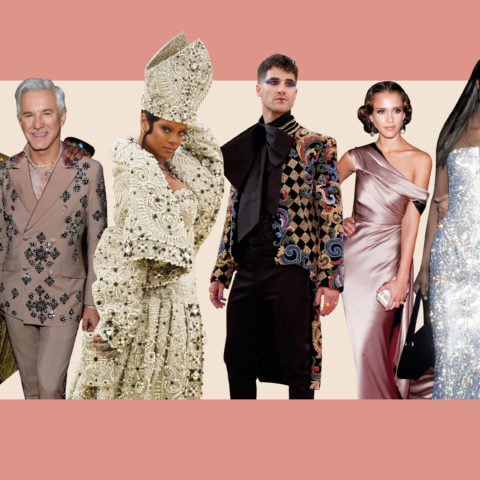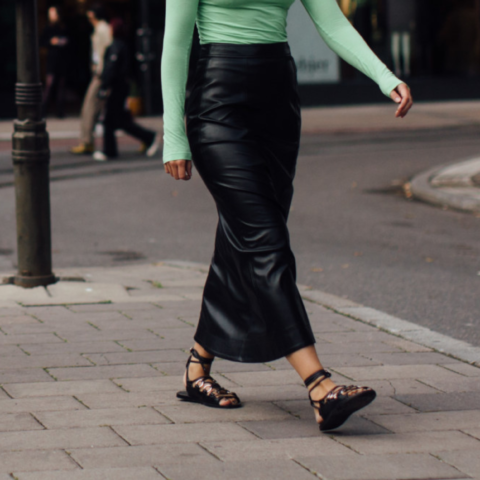Op-ed: American Apparel Recently Relaunched, Here’s Why It Probably Shouldn’t Have
For the past three weeks, give or take, an insidious promoted ad has taken hold of my Facebook homepage. “We’re back!,” the ads softly proclaim in telltale Helvetica font. Yes, American Apparel, once the only reliable place to purchase implausibly flattering shiny pants and abbreviated crop tops, is back.

After years of precipitous decline, in which founder Dov Charney masturbated in front of a reporter…twice (“It’s a sensual experience that doesn’t involve a man violating a woman,” he told Claudine Ko of Jane Magazine), had multiple relationships with employees and was accused of sexual assault before being ousted in 2014, the company very publicly filed for bankruptcy and liquidated all retail stores last year. American Apparel, the brand, was quickly snapped up by Montreal-based company Gildan Activewear, purveyor of heavy cotton t-shirts that never seem to soften up no matter how many cycles they spend in the wash, for a total of $88 million USD, and it seemed like they might continue to use the name to quietly produce slightly-softer t-shirts. Rather that quitly continuing to produce slightly sofer t-shirts to be bought in bulk and screenprinted as band merch, Gildan’s choice to resurrect American Apparel via a splashy native advertising campaign feels a little bit like being ‘orbited’ by an ex-lover: weird, jarring and totally toxic.
Surf on over to the “new” American Apparel’s website and the whole venture appears to be frozen in the mid-aughts, a time when hipsters thought shiny leggings were incredibly cool, and people actually still used the word ‘hipster.’ The familiar Helvetica font is the same. The racially ambiguous models shot in provocative poses under harsh lighting is the same. Not to mention the clothes are exactly same. The zip-up hoodies, colourful crewneck tees and soft tri-blend deep V-necks of years past are still abundant. The only thing that’s changed is their context.
In the age of #MeToo, where nerves are raw, watching the return of a brand so openly synonymous with sexual harassment is borderline triggering. Gildan is capitalizing on the name recognition of American Apparel without doing any of the necessary work of reckoning with its past. The ‘About Us’ section of the American Apparel website reads like revisionist history. Under a banner of scantily-clad white women and shaggy mid-2000s haircuts, a timeline states that American Apparel was formed in 1989 and lists milestones for the brand, none of which include the sex scandals and financial peril that American Apparel is now better known for than its clothes.

For me, American Apparel represents a discrete moment in time. During high school in the mid-aughts, I would log onto dial-up internet, waiting for the familiar clanging and dinging sounds to cease, before heading straight to uber-hipster party photography websites like Misshapes, The Cobrasnake, and Last Night’s Party, and wait patiently for the pictures to load. I was completely mesmerized by the beautiful, wasted young people in their absurd outfits, usually a combination of vintage and American Apparel. Somehow the brand’s basics were the antithesis of boring and represented the possibility of escape from my small-town Ontario existence. Once I finally did manage to escape, I even worked for the company for almost two years, around the time that the stomach-turning allegations about Charney came out (though long after her jerked it in front of the journalist…what can I say, it was a #problematicfave). But it’s not the mid aughts anymore. Nobody wants to wear miniature running shorts and listen to vaporwave. Times have changed and yet American Apparel has stayed exactly the same.
In essence, American Apparel is still pretending that it is 2008 when it’s actually 2018. It’s same tack that Dov Charney took when he launched his own carbon copy of American Apparel, called “Los Angeles Apparel.” Though it traded in the iconic Helvetica font for Eurostile Extended Bold, a cursory look through their website reveals a near-identical branding strategy to American Apparel. Braless models peacock in t-shirts and high-waisted mom jeans, and bedroom-eyed women strike provocative poses in thong bodysuits, with full bums and errant bikini lines on display. What the world officially does not need more of is the second coming of Dov Charney’s male gaze, two times over.
If Gildan wants to capitalize on the investment and relaunch the brand, fine, but to do so without changing a single thing is a missed opportunity. American Apparel already perished a first time; let’s see how long it lasts this time around.








